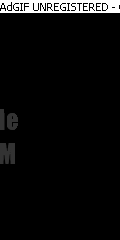Hello guyz.. just want to share this article posted by BUDEK at PINOYBSN!
The EVER POPULAR : LAST MINUTE TIPS!!!
In NP1 Please FOCUS on the following :
1. Types of leadership : Autocratic, Laissez faire, Democratic, transformational, transactional etc. etc.
2. Pattern of Nursing care : Primary nursing, case nursing, functional, team etc.
3. Expanded Nursing role : Nurse anesthetist, Nurse practitioner, Nurse researcher etc. etc.
4. Level of prevention by leavell and clark. Remember that crisis is always secondary.
5. 3 way bottle system : simply reconnect the tube, continuous bubble is a sign of leakage, no bubbling is obstruction [ in the waterseal ] and you should palpate the surrounding area for sq emphysema
6. Care of clients with tracheostomy and suctioning a tracheostomy tube [ sterile technique ] know the functions of the cuff, obturator and the tie. care of clients with pooling of secretions. Postural drainage : do this before meals, the positioning depending on the location of secretion, POPEVICO [ arrangement ] that is positioning, percussing, vibrating and coughing etc. study suctioning.
7. The independent and the dependent variable in research
8. Know your PURE and APPLIED as well as EXP and NON EXP also your QUANTI and QUALI designs
9. IV fluid tonicity : D5LR is hypertonic while LR is isotonic
10. Complication of IV and its intervention such as FLUID OVERLOAD , PHLEBITIS, INFILTRATION.
11. Blood transfusion
12. Complication of immbolity : DECUBITUS ULCER, HYPO PNEUMONIA, ATELECTASIS, DEEP VEIN THROMBOSIS
13. The VIRTUE ETHICS and ETHICS : Justice, fortitude, prudence, temperance, character, double effect, paternalism... etc etc and the Patient's bill of right.
15. Teaching and learning steps : Man initially needs information and MOTIVATION is needed for adherence to teaching. First step in teaching is to ASSESS LEARNING NEEDS before planning what to teach.
16. SAFETY : Causes of injuries according to age eg: elderly = falls, infant = suffocation and aspiration, adolescence = suicide and homicide. Intervention in an elderly client who falls frequently = keep the bed at the lowest possible position. etc.
17. Read ALL NP1 exam given by merge during the preboard, diagnostic and comprehensive examination and you will do VERY VERY VERY WELL. Read Budek's notes and you will do EXTREMELY WELL.
18. BON RESULOTION 220 [ CODE OF ETHICS ] RA 9173 AND 7164 [ COMPARE AND CONTRAST ] and the CONTINUING PROFESSIONAL EDUCATION. [ To enhance knowledge with regards to specific field of intrest ]
NP2
1. Stages of labor. The first stage up to the fourth stage and the LATENT ACTIVE AND TRANSITION of the first stage. study the intervention in all stages. Read pilleteri for this.
2. The menstrual cycle, what glands secret what hormones. The MENSTRUAL, PROLIFERATIVE, SECRETORY and ISCHEMIC phase. what hormone is at peak during what stage. etc. etc.
3. Causes of bleeding during pregnancy : Ectopic, abruptio and previa plus their nursing intervention.
4. Endometriosis and Endometritis.
5. IMCI : Pneumonia, Diarrhea and Dengue especially the breathing cut off [ Eg. 60 for under 2 months ], Acute/Chronic cutoff [Acute diarrhea and ear infection under 14 days] The interventions for CHILD A, B and C.
6. COMMUNITY HEALTH NURSING PROCESS : Assessment, Planning, Implementation and Evaluation. refer to the DOH book please read this one.
7. Care of the newborn child, Home visit, Clinic visit and Home labor.
8. Read pilleteri for : Characteristic of a toddler and preschool [ eg : asking too many questions, negativistic for toddler. Preschool = associative, imaginary, see the world on his own point of view, superego development etc. ]
9. POISONING : Lead, aspirin, etc. etc. this is the common cause of accident among toddlers.
10. Leukemia, Anemia and Sickle cell anemia
11. NEWBORN SCREENING
12. Amniocentesis = VOID, Ultrasonography = DRINK, Leopolds Maneuver = VOID, Paracentesis = VOID
13. Changes during pregnancy [ eg: Leukorrhea, braxton hicks, anemia ] and what changes occurs early or late. refer to pilletri
14. Pregnancy and nutrition : Balanced diet + 300 cal for pregnant. +500 cal for breastfeeding
15. PIH and MAGNESIUM SULFATE. [ cns down, rr down, u/o down ] priority : RR
NP3 AND NP4
1. Burns, Classification of Burns and Nursing Diagnosis for Burns, Drug use in burns [Silver Sulfadiazine], Electrolyte changes in burn [Hyperkalemia, Hyponatermia]. The WHO Pain ladder scale, Pain medications especially Demerol, Morphine and Fentanyl. Remember that PAIN is the hardest part for the nurse in caring for a burned victim. Burn wounds heal by secondary intention.
2. Nursing diagnosis after anesthesia : RISK FOR INFECTION or INEFFECTIVE AIR CLEARANCE.
3. PACU MONITORING = Q15 , SURGICAL FLOOR MONITORING = Q30
4. Pancreatitis, Cholecystitis, Hepatitis. Morphine causes spasms in the sphincter of oddi. Hepa B is caused by blood exchange. Hepa A is oro-fecal. both have vaccines either passive or active but if already exposed, Give PASSIVE.
5. Diabetes milletus and r/t footcare. Avoid wearing canvass shoes, check for the sensation, do not go outside without slippers. PERIPHERAL NEUROPATHY.
6. Electrolytes abnormality especially HYPOCALCEMIA and HYPER/HYPOKALEMIA. The ECG changes in potassium alteration, intervention and causes.
7. Myocardial infarction : ECG changes as well as nursing intervention. Causes and risk factors. refer to BRUNNERS.
8. Pharmacologic and None pharmacologic pain relief : Guided imagery, Biofeedback
9. BREAST and CERVICAL cancer. Assessment, Diagnosis and Treatment.
10. Management for a client with COLOSTOMY. The irrigation, diet and body image alteration as well as perioperative management of a client undergoing your ABDOMINAL PERINEAL RESECTION with permanent colostomy. Drugs given before APR such as neomycin and sulfasuzidine, Diet before APR [ low fiber ], normal color of the stoma just after APR [ slightly bleeding, red and protruding ]
11. Insulin administration, types and rotation. Refer to brunner. 1 inch away from each injection site, administer at room temp not cold to prevent lipodystrophy, abdomen has the fastest absorption. etc. etc.
12. Intervention during hypo and hyperglycemia
13. Care of clients with hyper and hypothyroidism, study TAPAZOLE/METHIMAZOLE and LUGOL'S SOLUTION, PTU. Care of clients after thyroidectomy : Monitor for hypocalcemia teach clients HEAD SUPPORT by putting hands at the back of the neck before trying to move the head.
14. Tuberculosis and Leprosy , its early / late sign and symptoms.
15. Acute and Chronic renal failure. Causes [ Post/pre/intra] and hemodialysis.
16. AGN, Rheumathoid and Ostearthritis, Bell's Palsy and Trigeminal neuralgia
17. Study radiation and chemotherapy and their usual side effects [Skin burn, redness, do not wet radiation mark]. Mammography, BSE, TSE, DRE, Prostate and Colon cancer, Changes that occurs during elderly, Bladder, Colon and Cervical cancer Diagnostic examination/CEA,Proctosigmoidoscopy,Biopsy,Pap smear.
18. Laryngeal cancer and tracheostomy care. [ refer to Kozier for tracheostomy care ]
NPV
1. In your Test V study the following : Anxiety and anxiety disorders, The level of anxiety and your anxiolytics, Schizophrenia : Paranoid type and Catatonic type and your nursing interventions for these clients as well as your priority nursing diagnosis.
2. Depression and your antidepressants, Mania, Personality disorders especially your Antisocial, Borderline and Paranoid. The defense mechanism use for different types of disorders and the priority NURSING DIAGNOSIS for each psychiatric disorders, Antipsychotic drugs its side effects and nursing intervention for each side effects.
3. Electroconvulsive therapy, Thought process disturbance manifestation such as Clang Association, Pressured speech, Thought blocking, Word salad, perseveration etc. etc. Alteration in perception and thought like hallucination and delusion. Types of delusions eg. religious and persecutory. Activities and diet as well as nursing diagnosis for a client with Mania, Depressed and Alzhemiers/Dementia patient.
4. Eating disorders and the treatments of choice [ Behavior therapy for Anorexia, Psychotheapy for the PDs, Cognitive for depression ] Always answer "STAY WITH THE CLIENT" especially if the question is about anxiety disorders and panic attacks. Always choose an option that will encourage verbalization of feelings, never answer an option with the word WHY.
5. Study your counter transference and your transference, Glaucoma, Cataract and crutch/cane walking. The principles of body mechanics, cranial nerve functioning and how to assess them as well as their disturbances especially Bells and Trigemnal Neuralgia. Meniere's disease, Delirum, Dementia, CVA/Stroke pathophysiology and Factors.
6. Psychotherapy : Behavior therapy - aversion, operant conditioning [positive reinforcement] systematic desensitization. Cognitive therapy is the PSYCHOTHERAPY of choice for depression. Study therapeutic milieu - general pt management, environmental manipulation, uses democratic leadership to test new patterns of behavior. Community meeting is the heart of milieu therapy.
Pharmacotherapy : Drug classification and side effects of ANTIPSYCHOTIC, ANXIOLYTICS, ANTIMANIC [ Tegretrol, Lithium, Depakene ]
7. Transfer of clients from BED to CHAIR as well as MOVING CLIENT UP IN BED [ READ KOZIER]
8. Supporting the client in : SUPINE [ eg. prevent neck hyperextension by putting pillow ], FOWLERS [ [prevent posterior curvature of the spine], DORSAL RECUMBENT [prevent hyperextension of the knee] AND SIDELYING position [Prevent lateral flexion of the sternocleidomastoid] [ Read Dervid Jungco's notes during critical ]
9. Equipments for immobility : Trochanter roll/sandbags - prevent external rotation of the hips. Pillow to support back, head, arms and shoulders. Footboard to prevent footdrop. Trapeze bar to move the client up in bed. Knee gatch or pillow - to slightly flex the clients knee.
10. INTRODUCE CHANGE GRADUALLY - Study methods of implementing change such as FORCE FIELD ANALYSIS - THE DRIVING AND THE RESTRAINING FORCES, FOCUS - FIND ORGANIZE CLARIFY UNDERSTAND SOLUTION. THE PDSA CYCLE - PLAN DO STUDY ACT.
thats it :)
THE 6 TECHNICAL TIPS FOR THE BOARD EXAMINATION
1. Accept the fact that you can never know everything. Therefore, once you see an unfamiliar question that was never been taught, use your test taking strategies.
2. If you are in Test I, II, III, and IV and you are being asked to prioritize, Use ABC first and then Maslow's Hierarchy of needs.
3. The use of your nursing process is heralded by the word: "The Nurse Would or The nurse's initial action" Remember to Assess first before intervening. If the situation and the question already assessed the patient, then proceed with the next step.
4. Encircle your modifiers. Some people make mistakes because of failure to see the word, "EXCEPT" or "NOT" or "INAPPROPRIATE"
5. Use your questionnaires as your scratch. You can write anything on that paper. If you will skip a number, place an asterisk or encircle the number.
6. DO NOT USE BLUNT PENCIL. Always use a sharp one and shade lightly. A sharpened pencil will give a very dark shade even if you will shade it lightly. Use the sides of the pencil not the tip. Use MONGOL NUMBER 2 ONLY. Some brands especially those made in china pencils are substandard. The machine will check the lead. If you are INCONSISTENT with your shading like an altering dark and light shades, you will FAIL the boards because of technicalities.




























